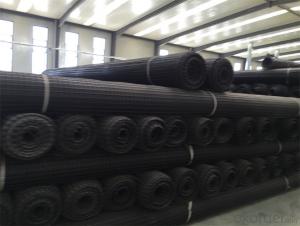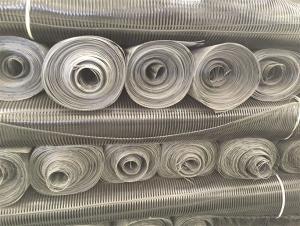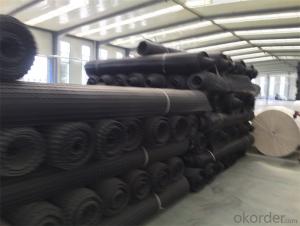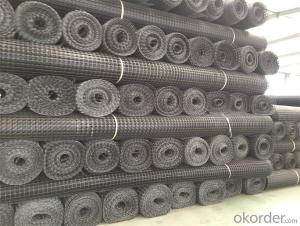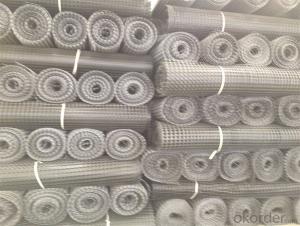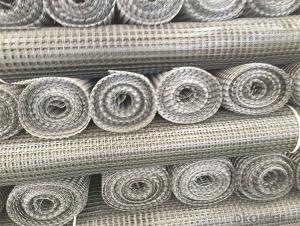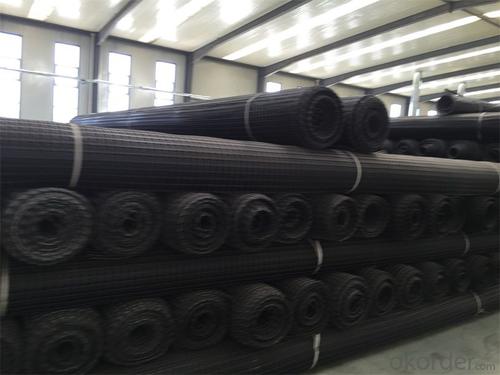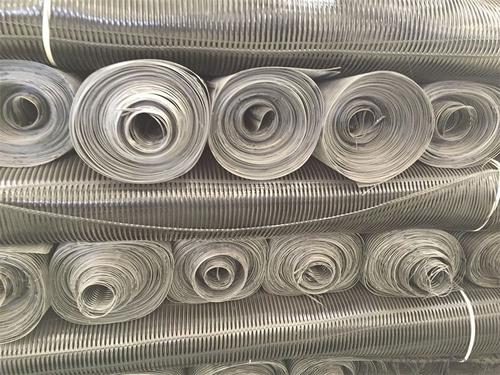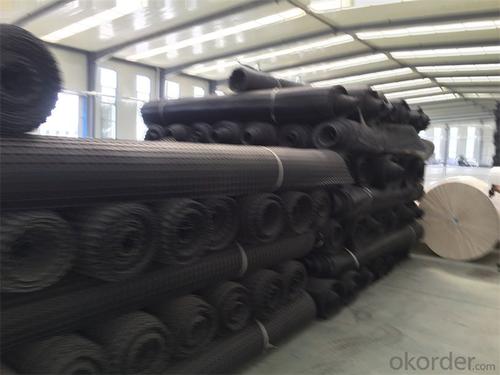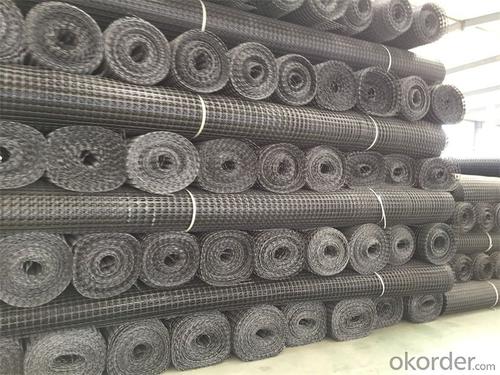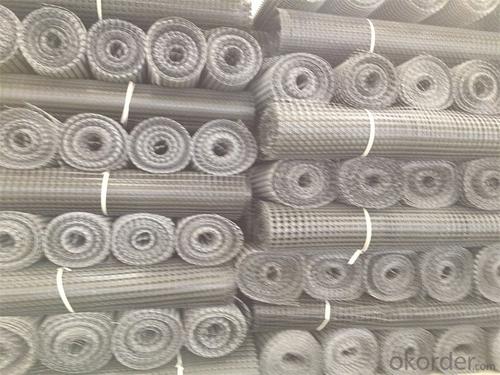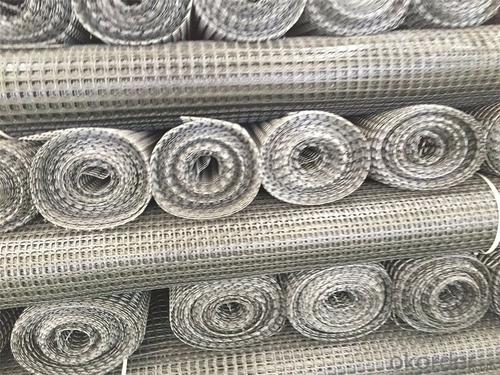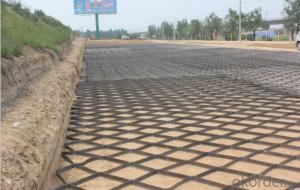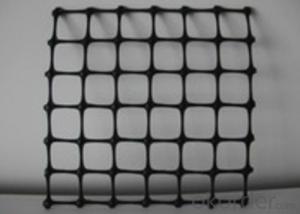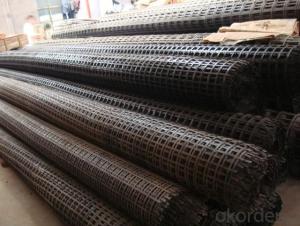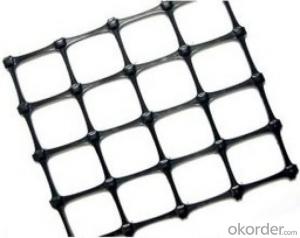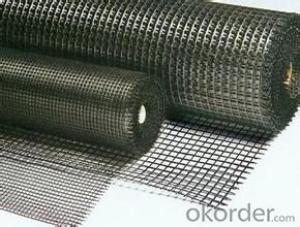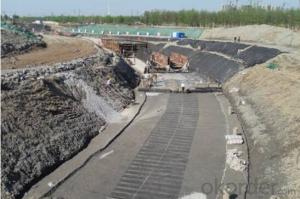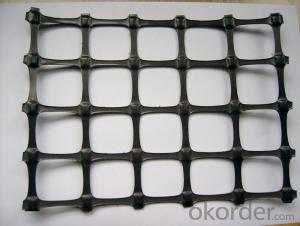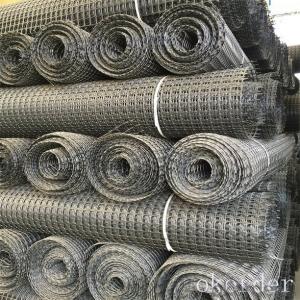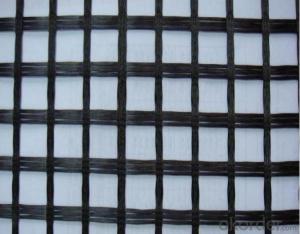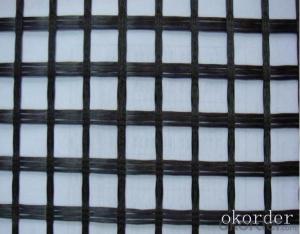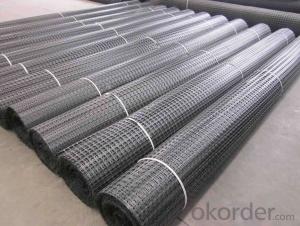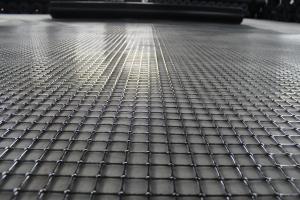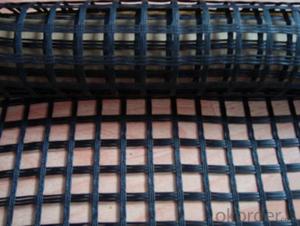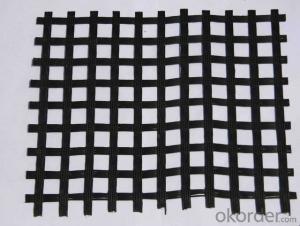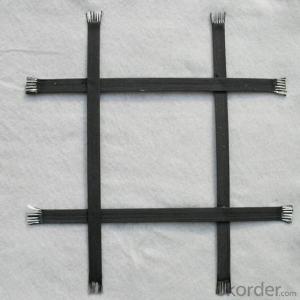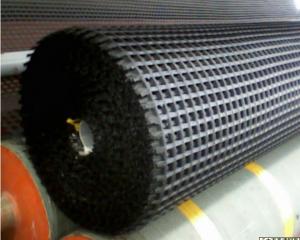Geogrids in India - Latest Technology Geogrid Manufacturer
- Loading Port:
- Tianjin
- Payment Terms:
- TT OR LC
- Min Order Qty:
- 20000 m²
- Supply Capability:
- 50000000 m²/month
OKorder Service Pledge
OKorder Financial Service
You Might Also Like
Fiberglass Geogrid Introduction:
Fiberglass geogrid is a kind of planar mesh material using alkali-free fiberglass yarn as base body and then coated with high quality modified asphalt. It is warp knitted with oriental structure which gives full play of yarn strength and improves its mechanical property to make the product high tensile, tearing and creep-resistant. Moreover, the composite property of coating with asphalt makes full protection of the fiberglass matrix and greatly improves its wear and shear resistance. All the advantageous functions make the product have a good performance in pavement strengthening, track cracking and solving difficulties of strengthening the bituminous pavement.
Fiberglass Geogrid Features:
1. Light weight, high tensile strength, high modulus, low elongation and good toughness.
2. Corrosion resistance, no long-term creep, long life span.
3. Good physical and chemical stability and good thermal stability.
4. Resistant to fatigue cracking, high-temperature track and low temperature shrinkage cracking.
5. Delaying and decreasing crack reflection.
Specifications | PET20-20 | PET30-30 | PET40-40 | PET50-50 | PET80-80 | PET100-100 | PET120-120 |
Elongation(%) | 10%~15% | ||||||
Vert Tensile strength(KN/m) | 20 | 30 | 40 | 50 | 80 | 100 | 120 |
Horiz Tensile strength(KN/m) | 20 | 30 | 40 | 50 | 80 | 100 | 120 |
Grid(mm) | 12.5×12.5 20×20 24.5×24.5 | ||||||
Width(m) | 1—6 | ||||||
Fiberglass Geogrid Application:
1. Road surface asphalt overlay construction engineering; Asphalt layers
reinforcement.
2. Converting old cement concrete road into composite road; Restraining
reflection cracking caused by block shrinkage.
3. Road extension; Preventing and controlling the cracking caused by new
and old combination and uneven settlement.
4. Treatment of the conjunction between tunnel and bridge or foundation.
Packaging & Shipping:
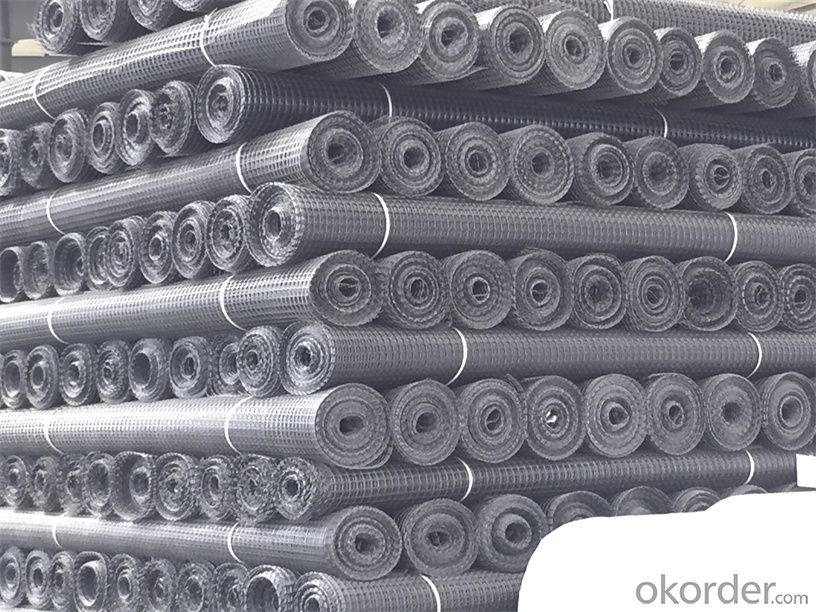
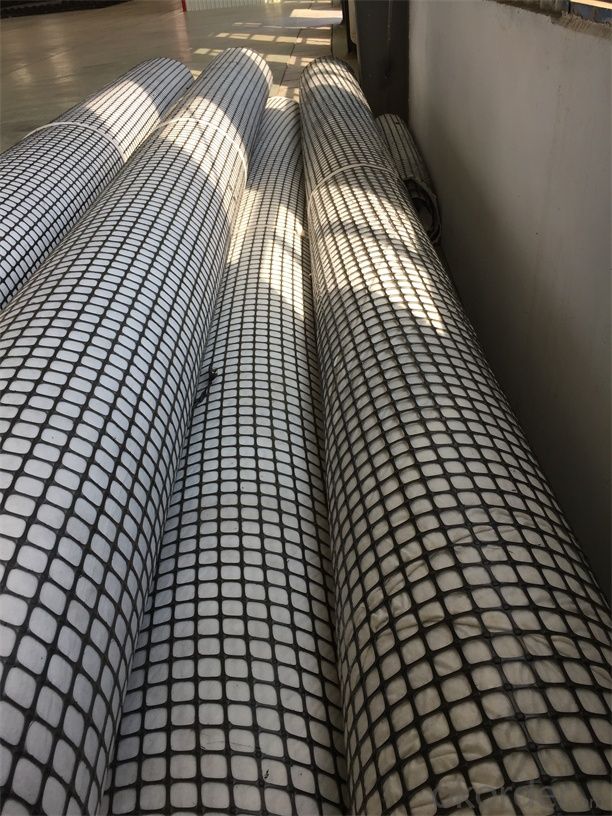
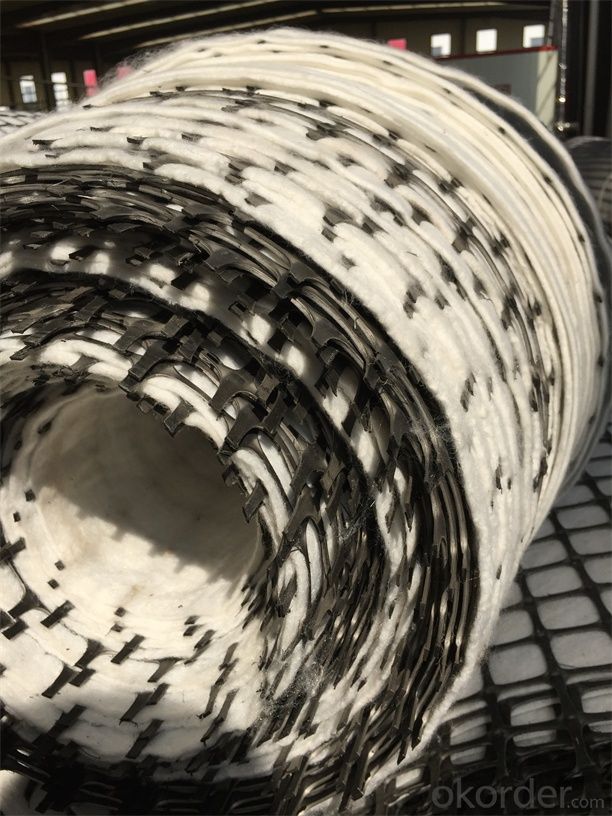
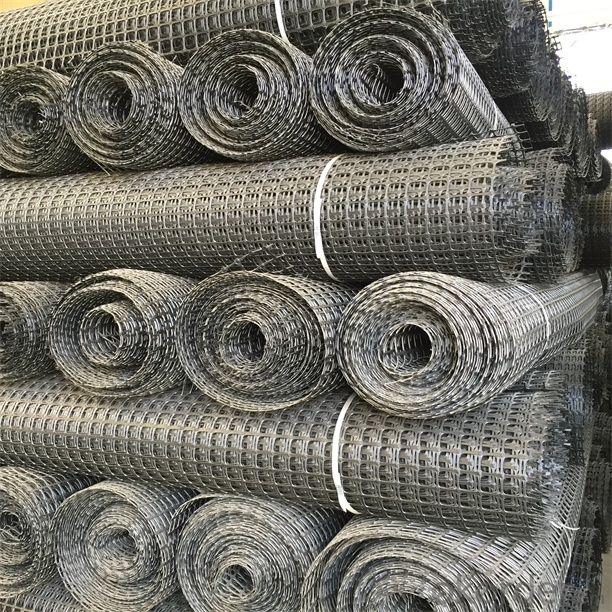
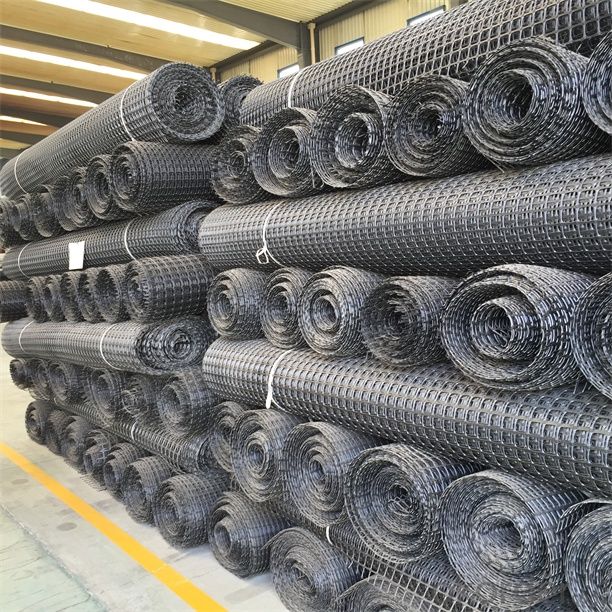

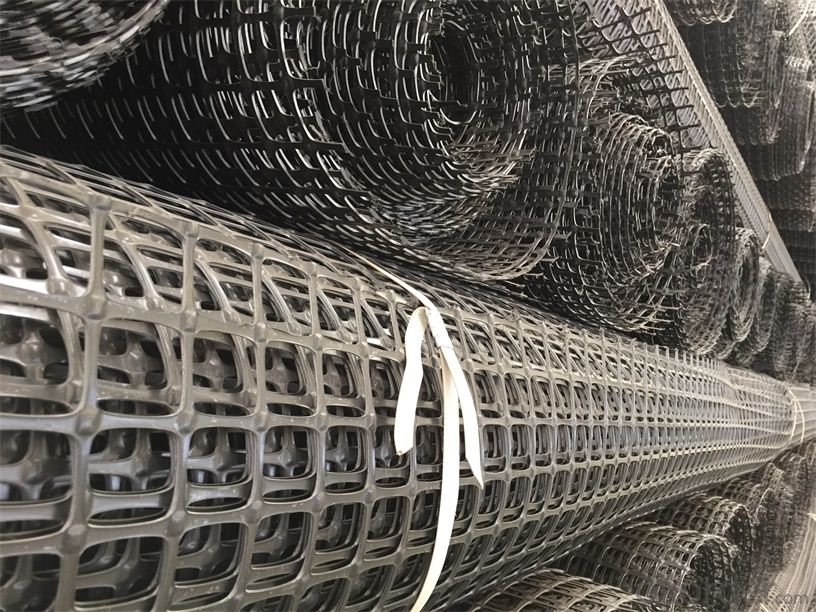
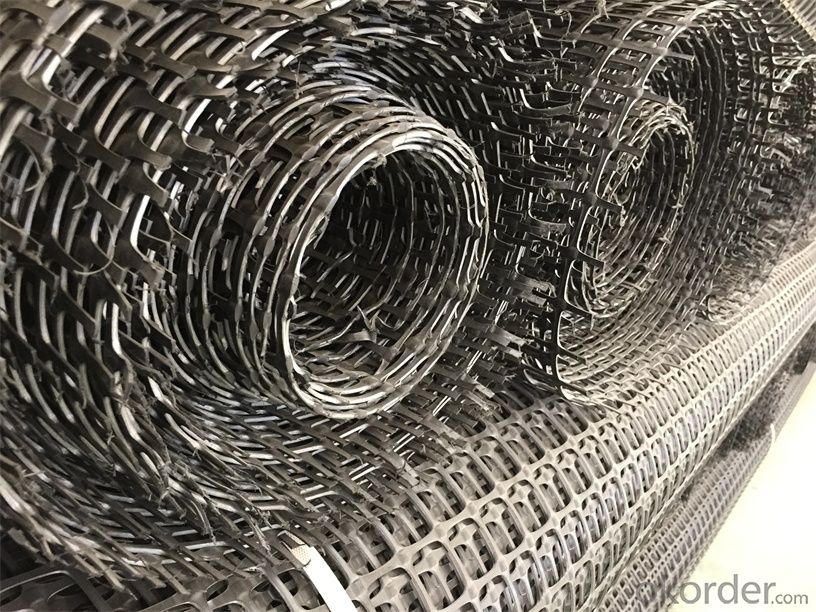
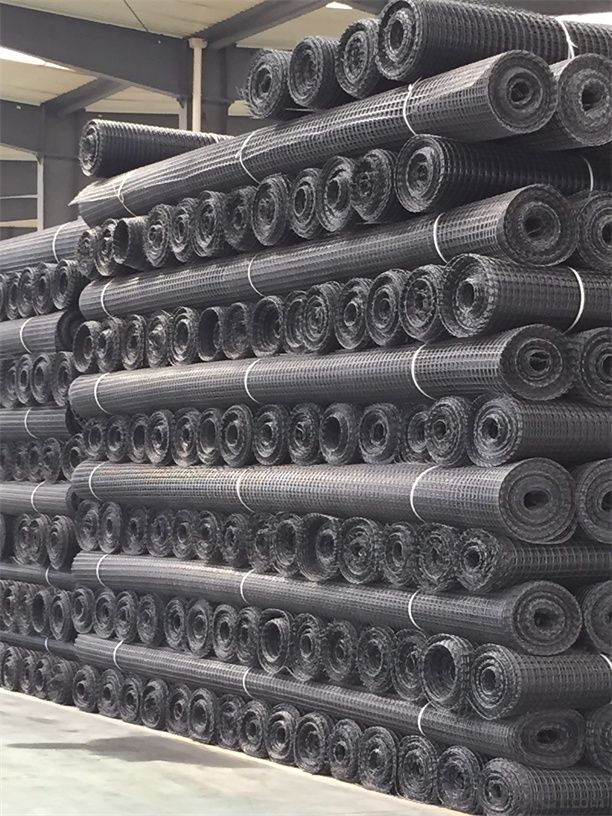
FAQ:
1. How to order your geogrid ?
a) Tensile strength in warp & weft direction
b) Grid size
c) Roll Width and length
d) Quantity
2. What is the Payment term?
a) TT
b) LC AT SIGHT
c) cash
d) 30% contact value as deposit ,the blance 70% be paid after received the copy of bl .
3. Delivery time
a) 19-25 days after received your depsit .
4. What is MQQ ?
a) 2500 m2 as MQQ , we can also produce sample for you .
Welcome to send your inquiry to us, and if you have any question, we can also help you.
- Q: What is a geogrid?
- A geogrid is a type of synthetic material made from polymers, typically used in civil engineering and construction applications. It is a grid-like structure with open spaces that allow for soil or aggregate to interlock with the grid, providing reinforcement and stability to the ground. Geogrids are commonly used to enhance the strength and load-bearing capacity of soil, preventing soil erosion and improving the performance of structures such as retaining walls, roads, and embankments.
- Q: What is the coefficient of friction of Nonwoven Geotextiles (polypropylene)?
- Such as artificial lakes, swimming pools, reservoirs and other projects, and geotextile is generally used in landscaping or highway pavement health
- Q: Can geogrids be used in reinforcement of bridge abutments on soft clays?
- Yes, geogrids can be used in the reinforcement of bridge abutments on soft clays. Geogrids are commonly used in geotechnical engineering as a soil reinforcement material. When placed in soft clay soils, they can improve the stability and strength of the soil, providing additional support to bridge abutments and preventing excessive settlement or failure. By distributing the load more evenly and increasing the bearing capacity of the soil, geogrids can effectively reinforce bridge abutments on soft clays.
- Q: How do geogrids improve the stability of cut slopes?
- Geogrids improve the stability of cut slopes by reinforcing the soil and preventing erosion. When placed within the soil, geogrids provide tensile strength and distribute the forces acting on the slope, reducing the risk of slope failure. They also enhance the overall stability by increasing the shear strength of the soil, minimizing displacement and potential sliding. Additionally, geogrids help to control water infiltration, reducing pore pressure and preventing saturation, which can further compromise the stability of cut slopes.
- Q: How does the steel plastic geogrid stretch? Where do you have a special fixture to sell? What is the best thing to use?
- Steel plastic geogrid price steel plastic geogrid specification steel plastic geogrid roleWhich is the professional manufacturer of steel plastic geogrid?Poi634 | browse 331Posted on 2017-02-21 12:33 best answerPlastic geogrid with high strength steel wire (or other fiber), through special processing, and polyethylene (PE) or polypropylene (PP), and adding other additives by extrusion become composite high strength tensile band, and surface roughness is embossed, high strength reinforced geotextile. The single belt is formed by the longitudinal and horizontal spacing or the clamping arrangement, and the welding joint is formed by adopting the welding technology of special strengthening bonding to weld the joint
- Q: What is the meaning of the geogrid reinforced asphalt in the project list
- Paving the asphalt before putting a layer of Geogrid
- Q: Can geogrids be used for slope stabilization?
- Yes, geogrids can be used for slope stabilization. Geogrids are engineered materials made from polymers that are used to reinforce and stabilize slopes. They are typically installed in a grid-like pattern and provide strength and stability to the soil, preventing erosion and reducing the risk of slope failure.
- Q: What is the lowest price of two-way plastic geogrid?
- General price to 25KN between 3.6-4.5, 30KN in about 5.5
- Q: Geogrid and geotextile which effect is good
- The utility model is applied to the reinforcement of the railway subgrade, the maintenance of the road surface, the protection of the sports hall, the dam, the isolation of the hydraulic engineering, the excavation of the cave, the coastal beach, the reclamation, the environmental protection and the like.
- Q: Characteristics of steel plastic geogrid
- 5, the use of high density polyethylene plastic composite grid can ensure that: at room temperature will not be affected by acid and alkali and salt solution, or oil erosion; will not be dissolved by water or microbial damage. At the same time, the high molecular weight of polyethylene is also sufficient to resist ultraviolet radiation caused by aging. The grille stress aspect rib synergistic effect, can not generate node crack or damage. But in the actual project, after the packing compaction, therefore has not been subjected to the ultraviolet light and the oxygen erosion, therefore completely may satisfy the permanent construction request.Engineering applications: highway, railway, bridge, road, pier, dam, slag field, such as soft soil foundation reinforcement, retaining wall and pavement crack resistance engineering and other fields.
Send your message to us
Geogrids in India - Latest Technology Geogrid Manufacturer
- Loading Port:
- Tianjin
- Payment Terms:
- TT OR LC
- Min Order Qty:
- 20000 m²
- Supply Capability:
- 50000000 m²/month
OKorder Service Pledge
OKorder Financial Service
Similar products
Hot products
Hot Searches
Related keywords
